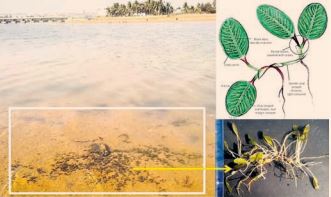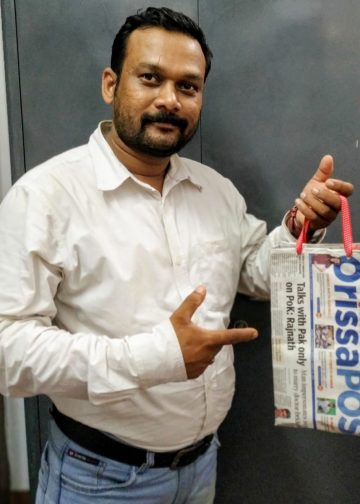Bhubaneswar: After nearly a decade, seagrass meadows—crucial for marine ecosystems—have naturally reappeared in Haripur Creek near Gopalpur, Odisha. Scientists attribute this rare ecological revival to reduced human activity during the Covid-19 lockdowns between 2019 and 2021.
Seagrasses, often called “ecosystem engineers,” play a key role in stabilising coasts, trapping carbon, and sheltering marine life. Once lost from Haripur Creek due to cyclones, pollution, and overfishing, their natural return is now being hailed as a “major ecological breakthrough.”
The findings, published in the prestigious National Academy Science Letters, were authored by marine scientists Debasish Mahapatro and Sangita Mishra. Their three-year field study (2019–2021) showed that the pause in tourism, fishing, and boating during the lockdown enabled seagrasses to naturally recolonise the creek.
Also Read: CM Majhi urges Centre to open satellite unit of TSU in Odisha’s Gopalpur
“This is a globally rare phenomenon. The pandemic unintentionally gave nature a chance to heal,” said Mahapatro, who had first documented seagrass in Haripur Creek in 2010.
Once confined to Chilika Lake, seagrasses were first reported in Haripur Creek between 2010 and 2012, dominated by the species Halophila ovalis. However, the meadows were wiped out between 2012 and 2019 by successive cyclones—Phailin (2013), Hudhud (2014), and Fani (2019)—as well as pollution from shrimp farms, plastics, and boating.
During the lockdown, stable salinity, active tidal flows, and the absence of extreme weather events created favourable conditions for regrowth. New species such as Halodule uninervis and Halodule pinnifolia were also recorded, signalling improved biodiversity. Biomass studies also confirmed the recovery. While Phase-I (2010–2012) recorded 23.1 g/100 cm², Phase-II (2019–2021) showed 25.3 g/100 cm². Researchers attributed the increase to the coexistence of multiple species, unlike the earlier period dominated by a single species.
Among the most striking outcomes of the seagrass revival was the first live sighting of the golden mantis shrimp (Lysiosquilla tredecimdentata) in Haripur Creek, a clear indicator of improving ecosystem health.
However, researchers caution that the fragile ecosystem remains under threat. “Plastic waste, ghost nets, and unregulated coastal development continue to endanger the seagrass meadows. We must act swiftly to protect what has been restored,” warned Mahapatro.
The revival of seagrass in Haripur Creek is seen not just as a local triumph but as a global example of how easing human pressure can help marine ecosystems recover naturally. Scientists are urging authorities and stakeholders to adopt long-term conservation measures to safeguard this vital underwater habitat.
As climate change and biodiversity loss dominate global debates, this ecological success from a small creek in southern Odisha offers a powerful message: sometimes, letting nature be can achieve far more than human intervention.
PNN






































